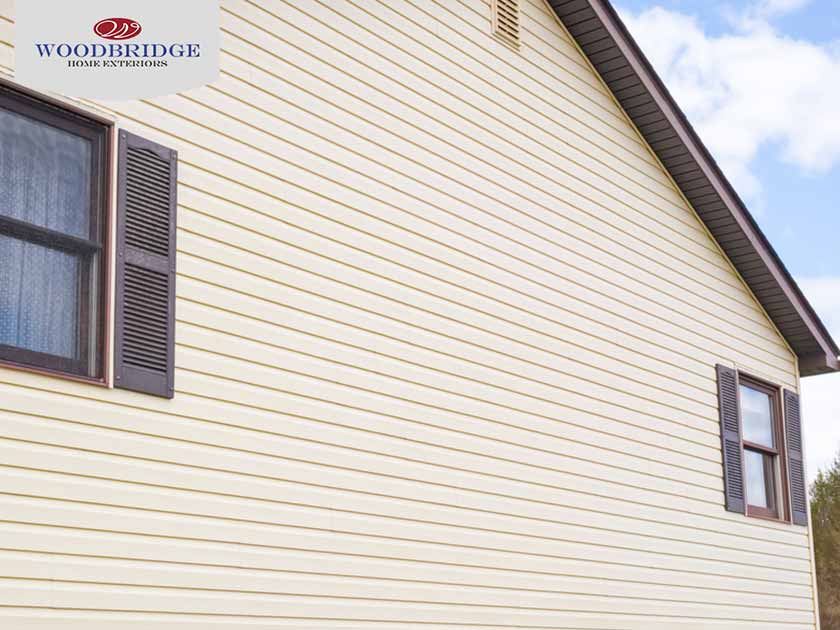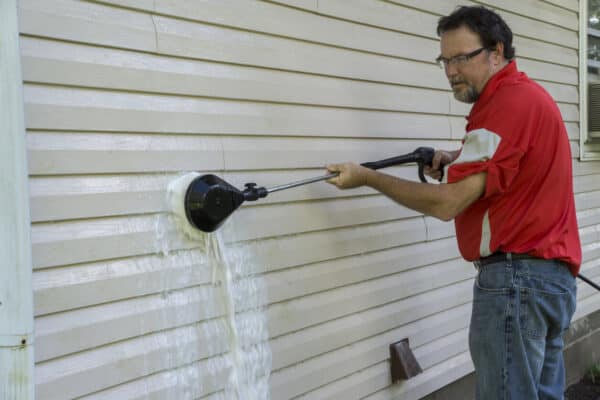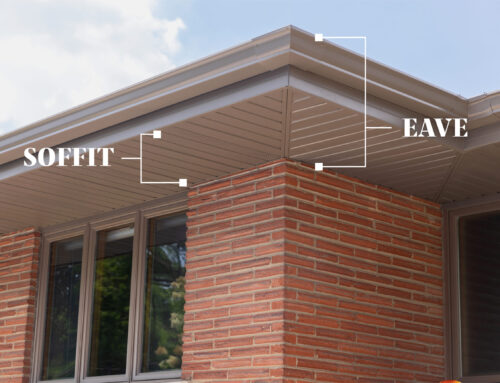
Vinyl siding is a highly reliable type of cladding that you can use for your home. It is also considered a versatile material, suiting different styles and weather conditions. Moreover, it does not require a high level of siding maintenance. In this post, Woodbridge Home Solutions lists four simple ways to keep your vinyl siding in top condition.
Contents
- 1 Clean Regularly
- 2 Use the Right Cleaning Tools
- 3 Check for Signs of Damage
- 4 Inspect the Shrubbery Around Your Home
- 5 Trim the Landscaping
- 6 Inspect All Siding Areas Before Cleaning
- 7 Protect the Plants With Tarp
- 8 Avoid Using Your Grill Near the Siding
- 9 Do’s and Don’ts of Maintaining Vinyl Siding:
- 10 Contact Woodbridge Home Solutions
Contents
- 1 Clean Regularly
- 2 Use the Right Cleaning Tools
- 3 Check for Signs of Damage
- 4 Inspect the Shrubbery Around Your Home
- 5 Trim the Landscaping
- 6 Inspect All Siding Areas Before Cleaning
- 7 Protect the Plants With Tarp
- 8 Avoid Using Your Grill Near the Siding
- 9 Do’s and Don’ts of Maintaining Vinyl Siding:
- 10 Contact Woodbridge Home Solutions
Clean Regularly
Schedule your siding for thorough cleaning at least once a year, ideally at the start of spring. This allows you to remove dirt and debris that may have accumulated during winter storms.
Use the Right Cleaning Tools
You don’t need much when cleaning your vinyl siding. A simple mixture of warm water and laundry soap can do the trick. If you are trying to remove grime, use a garden hose or a pressure washer. Just be careful with the pressure washer — do not use the high setting, as this can damage your siding. Also, ensure that the nozzle is aimed downward to prevent the water from going between the slats.
Check for Signs of Damage
Of course, ensure that your siding has not suffered from any damage. Make sure there is no buildup of grime or algae so that you can prolong the service life of your siding. However, if you find any damage, call an expert and plan for siding replacement.
Inspect the Shrubbery Around Your Home
Pay attention to the branches, tree limbs, and other debris that could possibly damage your siding, particularly during harsh winds or storms. Vinyl typically has good resistance against impact, but branches, twigs, and other debris may still puncture or damage the siding in extreme conditions.
Trim the Landscaping
Quality vinyl siding is durable, but it can get unsightly scratches from surrounding plants. Trim the shrubbery and trees around the house to avoid getting scratched. Even if you have sided with molded-in colors, scratches and punctures can be visible several feet away. Trimming overhanging tree branches is also a good practice for preventing damage to the roof.
Inspect All Siding Areas Before Cleaning
Cleaning your vinyl siding is the easiest part. For most areas, you need a garden hose, mild soap, a sponge, and a long-handled brush for those hard-to-reach areas. But before you start cleaning, look around the house and look for problem spots that may need to be pre-treated. For instance, if you find mold or other kinds of stubborn stains, treat them first with vinegar and water solution. Spray it on these areas, wait for a few minutes, then clean as you normally would. This can also work for certain types of vinyl replacement windows.
Protect the Plants With Tarp
If you think part of your landscaping might get damaged as you clean the siding, it’s best to take precautions and cover them before you start cleaning. Any clean tarp will do. You should also be cautious not to splash too much water around the plants to avoid overwatering them and to avoid water pooling around the house foundation.
Avoid Using Your Grill Near the Siding
If you plan to have a barbecue in the yard, avoid placing it near the siding. Direct heat can warp vinyl siding, while the soot and ashes from the coal can leave unsightly stains. It can also cause discoloration, which can look obvious if you have white siding.
Do’s and Don’ts of Maintaining Vinyl Siding:
Do: Wash Once a Year
Make sure your siding gets washed once every 12 months. Use soapy water and a soft brush to eliminate any dirt buildup. You might need a car-wash brush with a long handle and a high-pressure hose to wash areas beyond your reach. If you live in a community with terrible air pollution, you might need to clean your siding more frequently.
Don’t: Stop at Cleaning
Experienced siding companies, including Woodbridge Home Solutions, agree that cursory inspection should ensue after cleaning. It’s imperative to spot signs of structural damage as early as possible to head off chronic water infiltration.
For a thorough assessment, leave the job to a crew of professionals. Experts will check every seam and the joint between siding panels and trim pieces to identify worn-out caulk. Small cracks, holes, and tears don’t go unnoticed by someone with a trained eye.
Do: Trim Shrubbery
Vinyl is durable, but it can be prone to abrasion. If you have lush shrubs planted too close to your home’s exterior walls, trim them to keep their long branches from rubbing against your siding. When done promptly, pruning bushes stimulates healthy plant growth.
Don’t: Leave Siding Uncovered During Home Improvements
The discoloration is one of the culprits behind premature vinyl siding replacement. Sealants, stains, and other substances, like wet concrete, can ruin the charm and character of vinyl for good. Harsh chemicals, such as herbicides and insecticides, are also bad news to the material. Covering adjacent siding panels ahead of your home project matters.
Contact Woodbridge Home Solutions
Woodbridge Home Solutions is one of the area’s leading siding companies. We pride ourselves on our excellent craftsmanship and top-notch customer service.







